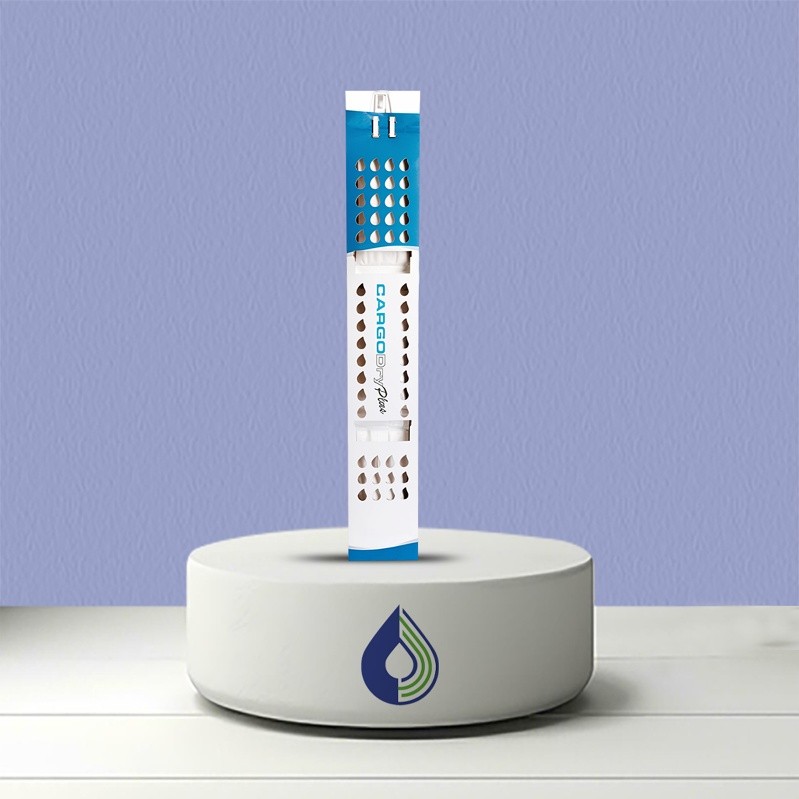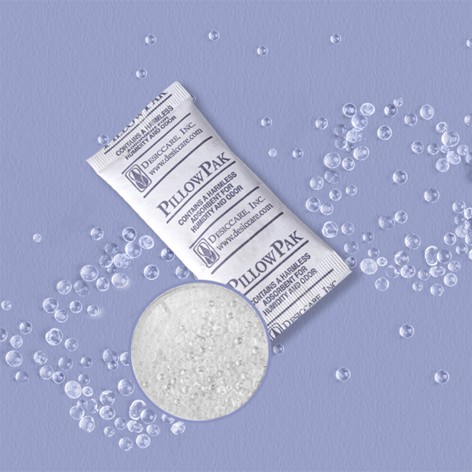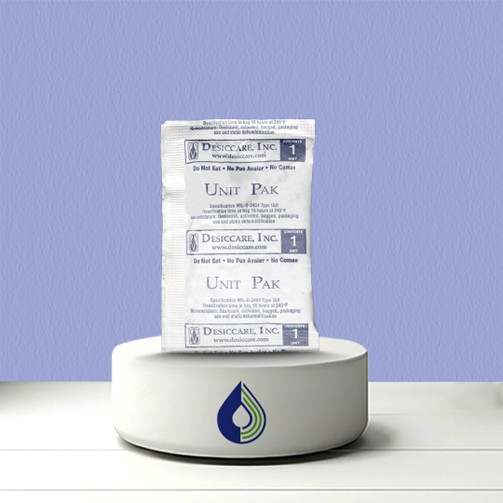
Do Desiccant Bags for Cargo Packaging Minimize Hydrolysis During Transit?
Studies indicate that approximately 10% of all cargo shipments worldwide are damaged due to container rain (condensation), a phenomenon resulting from humidity and temperature fluctuations during transit. In pharmaceutical logistics, controlling moisture is critical to preserving product stability and efficacy. Desiccant bags for cargo packaging serve as a primary defense against hydrolysis and other moisture-induced degradation mechanisms in moisture-sensitive drugs, biologics, and medical devices. Their integration into packaging aligns with regulatory standards, including GDP and ICH Q1A stability guidelines.
Hydrolysis Risk in Pharmaceutical Cargo
Hydrolysis occurs when water molecules react with sensitive compounds, compromising APIs, excipients, or finished dosage forms. Key contributors include:
- Elevated ambient humidity during storage or transit
- Condensation within sealed containers due to temperature fluctuations
- Extended transit durations across variable climates
- Exposure to unconditioned storage areas during loading and unloading
Even minor moisture exposure can reduce drug potency, alter dissolution rates, and catalyze unwanted degradation reactions.
Some excipients, such as lactose, mannitol, or microcrystalline cellulose, can absorb moisture and accelerate hydrolysis of APIs in solid formulations. For biologics, hydrolysis can lead to protein denaturation, aggregation, or loss of activity, severely impacting efficacy and shelf-life.
Documented cases from logistics audits show that improper moisture control can result in 5–15% product loss over typical shipment durations if no desiccant is used.
Technical Functionality of Desiccant Bags
Desiccant bags absorb water vapor to maintain low relative humidity inside shipping containers. Selection and application require careful technical consideration.
- Material Type: Silica gel is effective at lower humidity ranges (10–50% RH). Molecular sieves are preferred under high humidity conditions (>70% RH). Activated clay works effectively under moderate humidity (40–60% RH). For highly hygroscopic compounds, molecular sieve-based desiccants provide extended protection in tropical or high-moisture transit conditions.
- Capacity Calculation: Determining desiccant quantity involves container volume, anticipated transit RH, expected duration, and sensitivity of the drug product. Formulas exist for calculating the grams of desiccant required per cubic meter of container space, factoring in temperature-induced moisture load.
- Placement Strategy: Bags should be positioned near high-risk areas such as corners, pallet tops, and around moisture-sensitive product units. In multi-layered pallets or bulk shipments, desiccants distributed evenly across layers ensure uniform moisture absorption.
- Material Compatibility: Regulatory-grade desiccants must be inert, non-toxic, and compatible with drug surfaces and packaging films. Food-grade or pharmaceutical-grade silica gel is preferred for oral solid dosage forms, while moisture-sensitive biologics require desiccants that do not introduce particulate contamination.
Packaging design also impacts desiccant effectiveness. Containers with high water vapor transmission rates (WVTR) or improperly sealed cartons can compromise moisture protection. Proper desiccant selection and placement are essential for optimal results.
Performance Validation and Monitoring
- Colorimetric humidity indicators integrated into desiccant bags provide visual confirmation of moisture absorption. They change color when relative humidity exceeds predefined thresholds, for example, 60% RH.
- RH data loggers can continuously record environmental conditions during transit, providing audit-ready evidence of moisture control. These data support GDP compliance and regulatory inspections.
- Studies show that silica gel-based desiccants in blister packs can reduce moisture-induced degradation by over 80% over 12 months at 25°C/60% RH. Similar research indicates molecular sieves reduce hydrolysis in highly hygroscopic APIs by up to 90% over six months under tropical conditions.
Using these monitoring tools allows proactive intervention if moisture levels rise unexpectedly, helping avoid batch rejection, recalls, or stability failures.
Integration with Pharmaceutical Packaging Systems
Desiccant bags function optimally when combined with other protective measures:
- Primary and secondary packaging films with defined WVTR (Water Vapor Transmission Rate)
- Sealed unit dose or blister packs to minimize moisture ingress
- Temperature-controlled containers for biologics and highly sensitive compounds
- Shock-absorbent or barrier pallets to reduce mechanical stress and potential micro-leakage
Combining these approaches with desiccants ensures a multi-layered moisture protection system. For highly moisture-sensitive biologics or lyophilized formulations, integration is critical for maintaining stability during long-haul shipments and cross-border logistics.
Pharmaceutical companies increasingly incorporate moisture-mapping studies into container qualification to determine optimal desiccant placement and capacity, further reducing hydrolysis risk.
Regulatory Alignment and Quality Assurance
Pharmaceutical logistics is tightly regulated, and moisture control measures must comply with established guidelines:
- ICH Q1A outlines stability testing requirements and acceptable humidity ranges for APIs and finished products.
- GDP mandates that all shipping and storage conditions be controlled, monitored, and documented.
- USP and EP standards specify material compatibility, moisture limits, and testing protocols for pharmaceutical packaging.
Proper use of desiccant bags, validated via adsorption isotherms and container RH mapping, demonstrates compliance and ensures product quality. Detailed records are critical during inspections and support product release decisions by QA and QC teams.
Case Studies
Ending Note:
At Adsorbtek Solutions Inc., we provide high-performance desiccant bags for cargo packaging engineered to safeguard moisture-sensitive pharmaceuticals throughout transit. Our scientifically validated solutions meet regulatory requirements and integrate seamlessly with standard pharma packaging systems. By preventing hydrolysis and maintaining API integrity, our products help companies reduce product loss, maintain batch quality, and support compliance. For companies seeking a trusted moisture absorber for shipping in the USA, Adsorbtek Solutions Inc. delivers performance-driven, industry-aligned solutions.
Contact us to implement precise moisture control and ensure the stability of your pharmaceutical shipments across the supply chain.
FAQs:
1. What are desiccant bags for cargo packaging?
Desiccant bags are moisture-absorbing inserts that reduce humidity in shipping containers to prevent product degradation.
2. How do desiccant bags prevent hydrolysis in pharmaceuticals?
They absorb water vapor, maintaining low relative humidity and protecting APIs and formulations from hydrolytic reactions.
3. Which materials are commonly used in desiccant bags?
Silica gel, molecular sieves, and activated clay are widely used, each suited for specific humidity conditions.
4. Can desiccant bags be used with biologics?
Yes, properly selected desiccants help protect moisture-sensitive biologics from denaturation, aggregation, or activity loss during transit.
5. How is the performance of desiccant bags monitored?
Color-changing indicators and RH data loggers track humidity levels to ensure consistent moisture control during transport.
Search
Recent Posts



